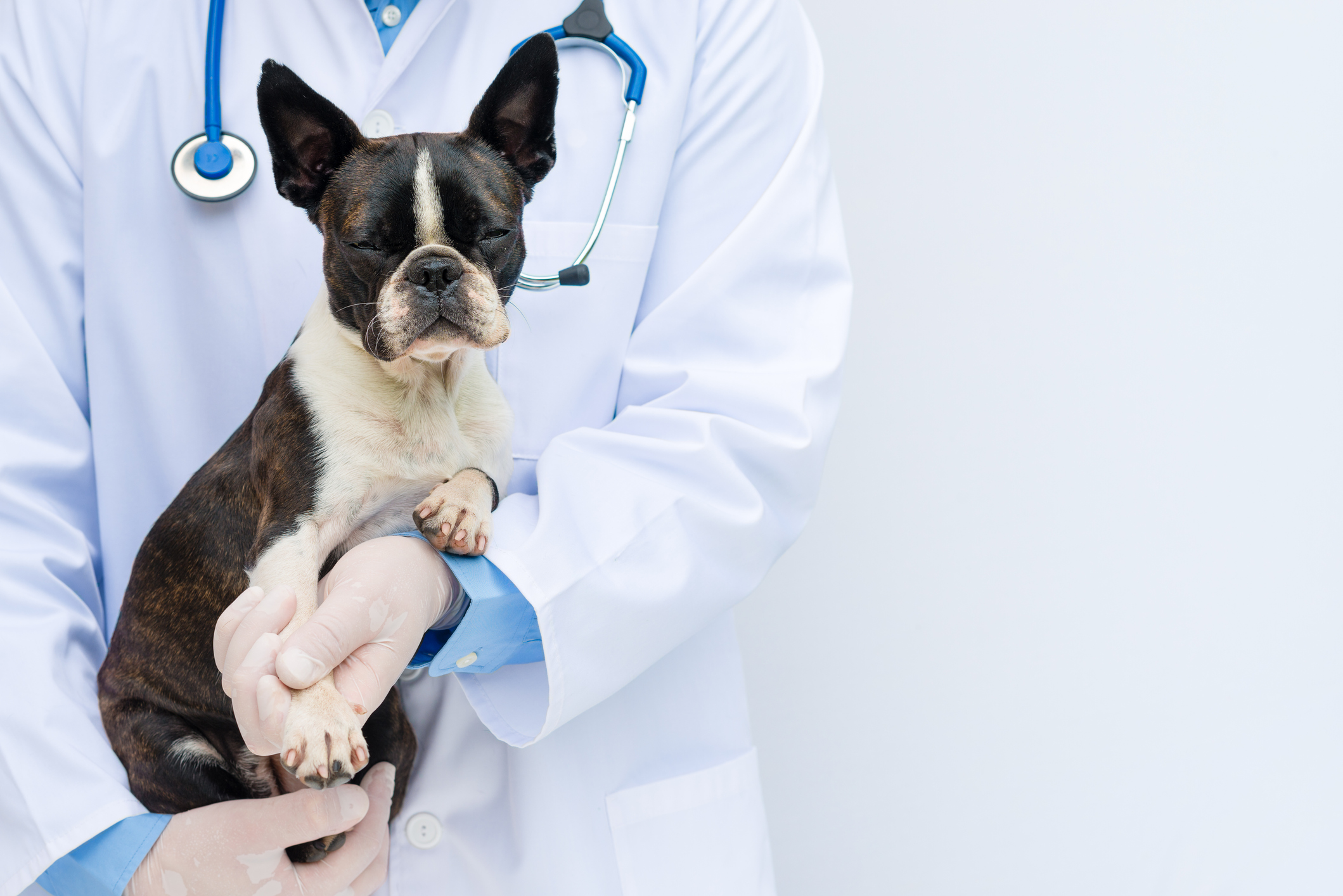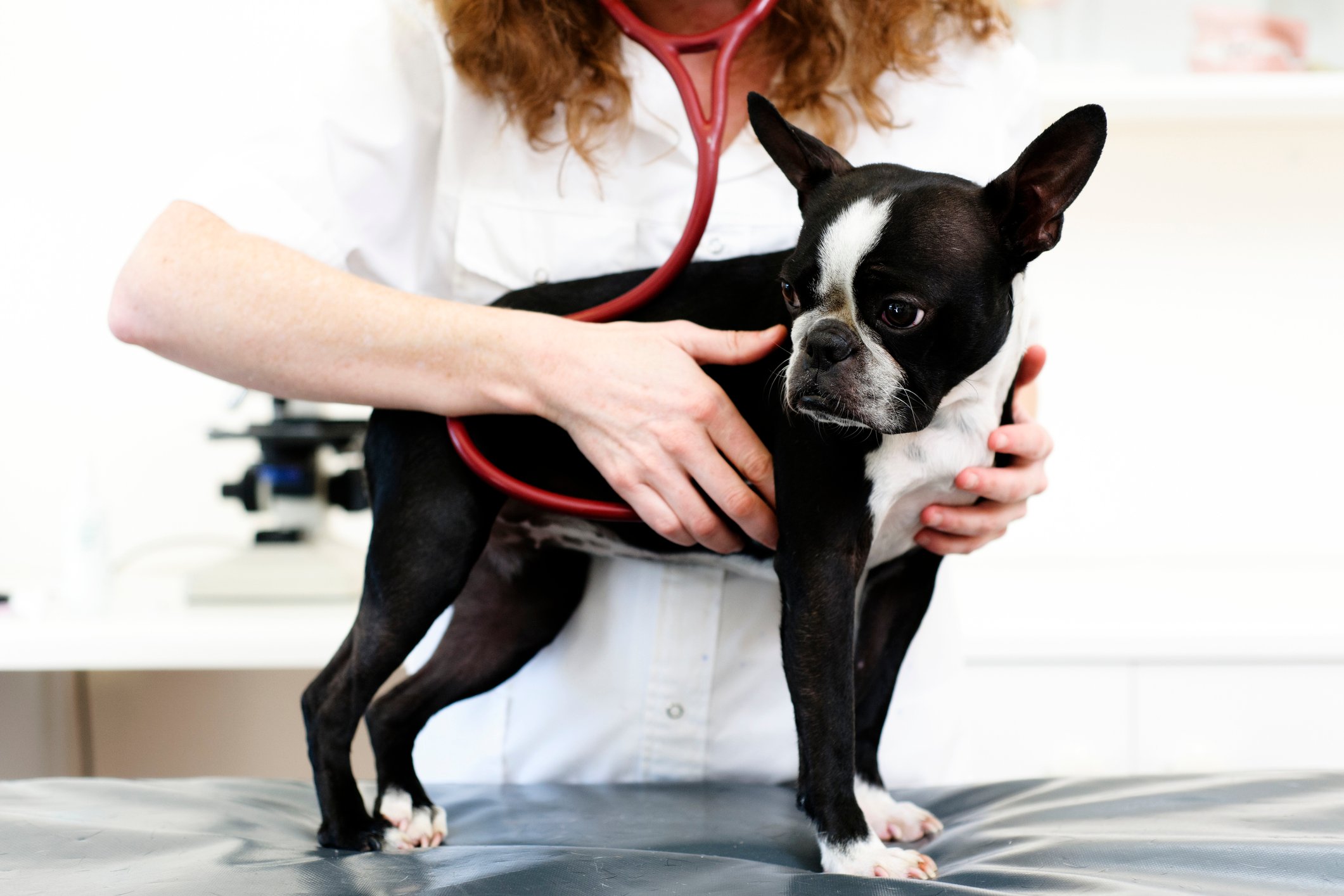
Everything You Wanted to Know About Kidney Disease in Dogs
It’s no surprise to any pet owner that as our dogs age they become more susceptible to a range of diseases and disorders. A common tragic disease most common to senior dogs is found in the kidneys. It is estimated that kidney disease will affect 10% of dogs at some point in their lives. Kidney disease can come on slowly or it can strike all at once. How it happens can depend on your dog’s general health, age, and some severe environmental factors.
Table of Contents
Just like our kidneys, a dog’s kidneys are responsible for several essential functions in their body, everything from balancing substances in the blood to filtering out wastes. Specifically, healthy, well-functioning kidneys are responsible for:
- Removing waste from the body in the form of urine.
- Regulating the amount of water in the body by disposing of extra and retaining enough to avoid dehydration.
- Stimulating red blood cell production by producing a hormone called erythropoietin.
- Regulating blood pressure.
- Balancing salt levels in the body.
- Aiding in the control of calcium and vitamin D, helping to keep bones strong.
When your dog’s kidneys stop functioning properly or fail, the presence of toxins start to build up in the blood leading to illness and disease. Kidney disease can be a tragic and terrible thing to go through with your dog, but it doesn’t have to. There are many options for treatment depending on the exact diagnosis.
Below you will learn the in's and out's of kidney disease and how it affects dogs in particular. With a little bit of knowledge, you as a pet parent can be prepared for the disease ahead of time.
What is Kidney Disease?
Kidney disease, also known as renal dysfunction, insufficiency, or failure, is a fairly common condition in dogs. The kidneys are hard-working organs that contribute to the normal function of many important processes in the body.
Many people think that kidney disease or kidney failure means that the kidneys are no longer working, nor producing urine anymore. This is not actually how the disease hurts your pup. Renal failure or kidney disease more specifically refers to the kidneys’ inability to properly filter the blood of waste products, and doesn’t affect the actual creation of urine at all. Ironically, most dogs experiencing kidney failure produce a fair quantity of urine, but the body's toxic wastes are not being eliminated as they should.
How Will Kidney Disease Show Up in My Dog?
By the time the symptoms of dog kidney failure are very noticeable, it may be too late to treat the condition effectively. The kidneys may lose functionality over the course of months or even years, so diligent early detection can make a huge difference for your dog’s health.

The two types of kidney failure in dogs are as follows:
- Acute Renal Failure (ARF) occurs when something injures or interferes with the function of the kidneys suddenly.
- Chronic Renal Failure (CRF) refers to a situation in which a dog’s kidneys have not been able to perform properly over a long period of time.
Acute kidney failure happens suddenly and results in a steady decline over a period of a few days. But where does it come from? Your dog’s kidneys can experience acute failure from decreased blood flow or oxygen, infection, urinary blocks, or forms of toxic poisoning, including antifreeze, certain medications, or tainted foods.
While some kidney problems have an immediate cause that can be treated, chronic kidney disease shows up over a period of time and its causes are harder to determine. Our older dogs tend to mainly experience this slowly developing condition, often brought on by other underlying illness or inherited conditions from birth. However, it is also much easier to treat successfully than acute kidney failure!
Although you wouldn’t think it, a dominant cause of chronic kidney failure in dogs is dental disease. When your dog experiences advanced dental disease, certain associated Bacteria can enter the bloodstream and target certain vital organs. This can cause irreversible damage to the heart, liver and kidneys.
Can Kidney Disease in Dogs be Cured?
Quite often, acute renal failure can have a good chance of success if it is treated very quickly and very aggressively. However, depending on the individual circumstances, it may also result in chronic renal failure, which is sadly not reversible though it is manageable. Treatment of chronic kidney disease is aimed at holding the toxin levels in the blood low enough to keep the dog feeling comfortable.
What Are the Most Common Signs of Kidney Disease in Dogs?
The most common sign of kidney failure in dogs, which is usually noticed first, is increased water consumption and urination. This often can lead to accidents in the house or frequently wanting to go outside. Pet parents may be tempted to take water away to reduce this, but doing so could actually make things worse. Let your dog drink as needed unless otherwise directed by your vet.

In the case of acute renal failure, this situation comes on very sudden and usually quite noticeable. In chronic renal failure, the signs come on more gradually and they may be missed by the dog’s owner for a while.
Later signs of kidney failure include:
- Vomiting
- Lethargy
- Weight loss
- Decreased appetite
- Dehydration
- Bad breath with a chemical odor
- Oral ulcers
- Pale appearance
In the latest stages of kidney failure, urine production slows down or stops, and the pet may vomit material that looks like coffee grounds or produce tarry (bloody) feces. Reaching this point is truly critical. Pet parents need to take action if any of the later signs and symptoms show up, and visit a veterinarian right away.
How Will My Vet Diagnosis and Treat My Dog’s Kidney Disease?
Your veterinarian will take a thorough history of any signs of illness that you have been noticing in your dog, and then will do a complete physical examination. If anything that may indicate kidney disease is discovered, bloodwork and a urinalysis may be ordered.
There are numerous values on these tests that can be impacted by kidney disease, and your veterinarian will evaluate them all together. Below are some of the test results that can aid in the diagnosis of kidney disease.
- Urinalysis: When a dog’s kidneys aren’t working properly, they can’t produce a normally-concentrated urine. A urinalysis (the microscopic, chemical, and physical evaluation of a urine sample) will reveal a dilute urine in the form of a low specific gravity test result. An increased protein level in the urine may also be present as the kidneys lose the ability to conserve it properly. A urinalysis can also help to determine whether a bladder or kidney infection is present that needs to be addressed.
- Blood Urea Nitrogen (BUN): As the kidneys break down proteins for use in the body, one of the byproducts that is produced is BUN. When kidney disease is present, the BUN level in the blood increases.
- Creatinine: Creatinine is another byproduct of the breakdown of proteins, and it can be an even more sensitive test for the presence of kidney disease than BUN. As the creatinine level becomes too high in a dog’s bloodstream, she begins to feel and act sick.
- Symmetric dimethylarginine (SMDA): This is a revolutionary new kidney function test that enables veterinarians to diagnose chronic renal failure in dogs months or even years earlier than traditional methods, making it possible to intervene earlier and more effectively manage kidney disease.
- Phosphorus: Dogs with kidney disease are not able to dispose of excess phosphorus properly, and they can develop hyperphosphatemia (increased blood phosphorus levels). This, in turn, causes a disturbance in the calcium-phosphorus balance of the body. As a result, calcium is mobilized from bones in an attempt to rebalance the system. This leads to demineralization and weakness of the bones.
- Potassium: Kidney disease in dogs can be associated with low potassium levels (hypokalemia). It is unclear whether low potassium is a cause or an effect of the illness, but it results in weakness.
- Blood Pressure: High blood pressure (hypertension) may develop in dogs with renal disease. Hypertension can cause damage to the dog’s eyes, brain, and heart as it progresses. It also causes further damage to the kidneys, hastening the progression of the renal failure.
- Hematocrit: The hematocrit is the percentage of a dog’s blood volume that is made up of red blood cells. When the kidneys are failing, they do not make enough of the hormone erythropoietin, which stimulates the production of red blood cells. Because these important cells carry oxygen to all tissues, every system in the body is affected when there are not enough of them. A low hematocrit is associated with pale gums, general weakness, and a decreased appetite.
Sometimes x-rays, abdominal ultrasound, or kidney biopsy are used in the diagnosis of kidney disease. Once it is diagnosed, renal disease in dogs is often given a Stage according to a system created by the International Renal Interest Society.
This system uses mainly blood creatinine levels as well as factors such as signs of illness, BUN levels, and blood pressure to classify the severity of your dog’s kidney disease. While the entire system contains many more specifics, the general values for each stage are as follows:
- Stage I (pre-failure): No obvious signs of the illness
- Stage 2 (mild failure): The dog may or may not be showing signs of illness
- Stage 3 (moderate failure): The dog is showing some signs of illness, especially increased water consumption and urination
- Stage 4 (severe failure): The dog is very obviously ill
Treatment of Kidney Disease in Dogs
There are two discernible phases of kidney disease treatment for your pup.

Phase 1: “Restart” the kidneys - To begin this process, the veterinarian will give your dog large quantities of intravenous fluids in an attempt to “flush out” the kidneys. This flushing process (known as diuresis) is done to stimulate the kidney cell functionality. A successful treatment is determined if the body’s waste removal needs match enough remaining functional kidney cells. In addition to diuresis, your vet will include a specific diet and potentially medication to control vomiting and diarrhea.
As a pet owner, you can expect three potential outcomes from phase 1 treatment:
- The kidneys start functioning normally again and remain in this state for several weeks up to several years.
- The kidneys start functioning again as a result of treatment, but fail as soon as treatment stops.
- The kidneys do not start functioning again at all.
The disappointing part of this treatment is that there isn’t a reliable test to determine the outcome. Pets and pet owners have to risk that the treatment will not restart the kidneys. Even so, if your dog’s kidneys do improve after phase 1 they are still damaged and will never be normal again. This means that continuous at-home treatment is necessary to maintain functional kidneys, otherwise your dog will soon be back in kidney failure.
Phase 2: Keep the kidneys functioning - This is accomplished through one or more treatments available for kidney disease in dogs, and the one your veterinarian chooses for your pet will depend on his or her individual signs, condition, and specific test results.
Get familiar with some of the potential therapies that your dog might be prescribed. The most common treatments for dog kidney failure are:
- Medications for Nausea: The kidneys are responsible for producing gastrin , a hormone that causes the release of gastric acid in order to aid in digestion. Dogs with renal disease are not able to shut off the production of gastrin properly, so they often have too much gastric acid, leading to nausea. Anti-nausea medications may be necessary for dogs that are vomiting or those that aren’t eating well.
- Antacids: These medications can also help counteract the extra gastric acid in the stomach.
- Gastro-protectants: Stomach-coating medications are sometimes used in dogs with kidney disease to protect their stomach lining from the effects of too much gastric acid.
- Appetite Stimulants: The toxins that build up in a dog’s blood stream during renal disease can cause decreased appetite, and stimulants are sometimes used to combat this until the toxin levels can be better-controlled.
- Erythropoietin Injections Along with Oral Iron Supplements: Anemia occurs in dogs with renal disease because the failing kidneys cannot produce enough erythropoietin, the hormone that triggers red blood cell production. Erythropoietin can be replaced through injections. These injections are usually given along with oral iron supplements so the body has the necessary building blocks for producing red blood cells. Unfortunately, there is a high rate of the development of auto-immune reactions to erythropoietin injections in dogs, which leads to even more profound anemia. If these injections are used in the treatment of kidney disease in dogs, it is in the later stages.
- Phosphate Binders: Increased phosphorus levels in the blood can cause decreased appetite and lethargy in dogs. Phosphate binder medications can decrease phosphorus levels and increase quality of life. Controlling phosphorus levels in kidney patients has also been linked with increased survival times.
- Angiotensin Converting Enzyme (ACE) Inhibitors: These medications decrease the pressure inside the kidney cells and help to reduce the body’s loss of protein into the urine.
- Blood Pressure Medication: Blood pressure should be monitored closely in dogs with kidney disease, and medications can be used if it is increased. This may slow the progression of the illness and guard against other consequences of high blood pressure such as eye, brain, and heart changes.
Are There Alternative Therapies for My Dog’s Kidney Disease?
Pet owners may want to explore holistic alternative therapies to complement their vet’s kidney treatment plan. Between diet, supplementation, and hands-on procedures, there are a host of integrative treatments to support your dog’s road to recovery.

- Probiotics: Specially designed probiotic formulations for kidney patients are thought to help flush out the toxins present when the kidneys aren’t functioning properly.
- Antioxidants: Unique antioxidant formulations are used in dogs with kidney disease to help decrease the damage caused to cells in the body by the increased toxin levels in the blood.
- Decreasing stress: A stress free environment may keep dogs with kidney disease, or any other health risks, stable longer.
- Herbal supplements: Many dogs with kidney disease have found stabilizing support through a range of herbal supplements. Most notably those containing Rehmannia root, Astragalus root, and Dong Quai root.
- Acupuncture & chiropractic: These hands-on alternative methods may be used as part of a holistic treatment approach in dogs with renal dysfunction to help encourage success in treatment.
- Potassium supplements: Potassium supplements can help with the weakness that is associated with low potassium levels in dogs with renal disease.
- Fluid therapy: The cornerstone of treatment for canine kidney disease is fluid therapy. The toxin build-up in the blood that results in sickness can be diminished by resolving dehydration and increasing urination. More normal phosphorus, potassium, and vitamin levels can also be restored, allowing the dog to feel better.
- Nutritional support: If a dog is extremely sick when she is diagnosed with renal disease and isn’t eating, aggressive types of nutritional support such as force-feeding or the placement of a stomach tube may be employed during the stabilization period.
- Special diets. Specially-formulated renal care diets are usually recommended at some point in the disease progression for dogs with kidney dysfunction. These diets may include some or all of the following characteristics:
- Protein restriction.
- Phosphate restriction.
- Sodium restriction.
- Canned diet to increase water consumption.
- Home-cooked renal diet if it is balanced by a veterinary nutritionist.
- Multivitamins. Because dogs with kidney disease may not be as able to conserve water-soluble vitamins, a daily multivitamin is recommended.
- Omega fatty acid supplementation: These are sometimes used as part of the support of a dog with kidney disease, and they are often present in kidney formulation diets.
Preventative Care to Avoid Kidney Disease in Dogs
It is not possible to prevent all instances of kidney disease in dogs. However, many cases of acute renal failure can be avoided by:
- Keeping all toxins and human medications away from your dog.
- Not giving your dog any medications without asking your veterinarian first.
- Not allowing your dog to have access to foods such as grapes and raisins that can cause kidney disease.
It’s possible that many cases of chronic renal disease can be avoided or mitigated by doing the following:
- Providing your pet with good dental care throughout her entire life. Brushing her teeth, using specific dental treats and foods, and having her teeth cleaned by her veterinarian as needed can decrease the bacteria and inflammation in her mouth that is associated with the development of renal failure.
- Taking your dog to the veterinarian regularly. When disease processes can be caught and managed early, they are less likely to result in chronic inflammatory conditions that can trigger renal disease.
How Should I Care For My Dog During Treatment?
Depending on the severity of the condition at the time of diagnosis and whether your dog has any concurrent illnesses, the average lifespan of a dog following diagnosis of chronic renal disease is one to three years. During this time your beloved pup will require a daily routine and treatment process that works for your pup.

Stay Hydrated
Make fresh, clean water available at all times. This is the most important thing to your pup suffering from kidney disease and the easiest to implement. While there are debates about tap versus purified water, tap water is absolutely fine and will in no way exacerbate the disease. There is no proof that purified water is in any way better for your pets.
Vets may also recommend subcutaneous fluid treatment[fluids placed under the skin] as it can be very helpful in hydrating an animal with chronic renal disease. Speak more with your veterinarian to learn the appropriate type of fluids for the specific pet and the amount and frequency to be administered. The vet can teach you how to administer these fluids at home in a calm environment to minimize the invasive nature of this procedure.
Limit Stress and Discomfort
Stress can decrease appetite and water intake, which can be a huge hazard to your pup’s kidneys. As pet parents, we need to keep our sick pets calm, cool, and collected. This may mean shifting your dog’s lifestyle to reduce hyperactivity and anxiety. Help them avoid separation anxiety, limit their social play time, and stay calm during big household changes. Intense fluctuation in temperature can also stress out your pup’s immune system. Keep your house comfortable and make sure you have a nice warm dog coat for winter time walks.
Easing Side Effects
If your dog is suffering through chronic renal failure you may have to mitigate the effects of weight loss, drinking and urinating frequently, nausea, vomiting, and disinterest in food. Here are some specific things you can do to help address both:
- Constant access to food and water. Include a few special treats in the food to coax your dog into eating.
- Frequent drinking and then needing to urinate can mean that your house-broken dog may start having accidents in the house. Stay calm and do not scold your dog. It isn’t his or her fault and your verbal frustration will only cause unneeded stress and anxiety.
- Some basic over-the-counter medications help ease nausea and vomiting in dogs just as effectively as they do for humans. Discuss with your vet whether famotidine (Pepcid) and omeprazole are appropriate, and in what dosages. Try using chamomile tea to settle an upset dog’s tummy. It is also recommended for colic, gas, and anxiety.


